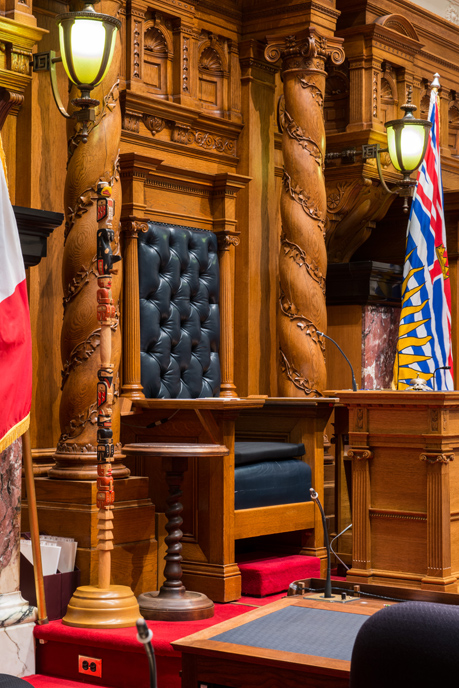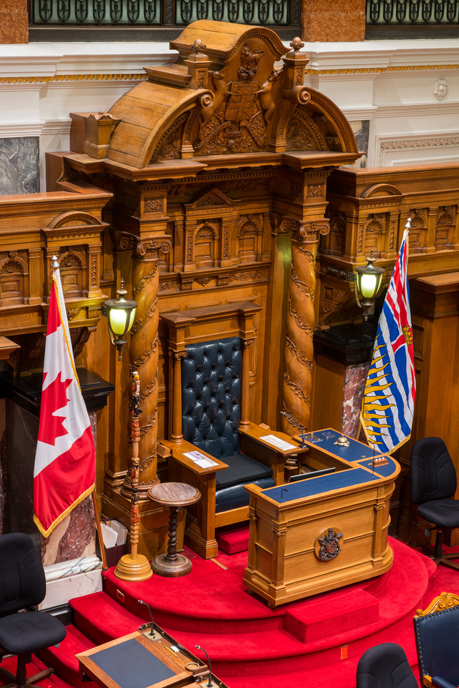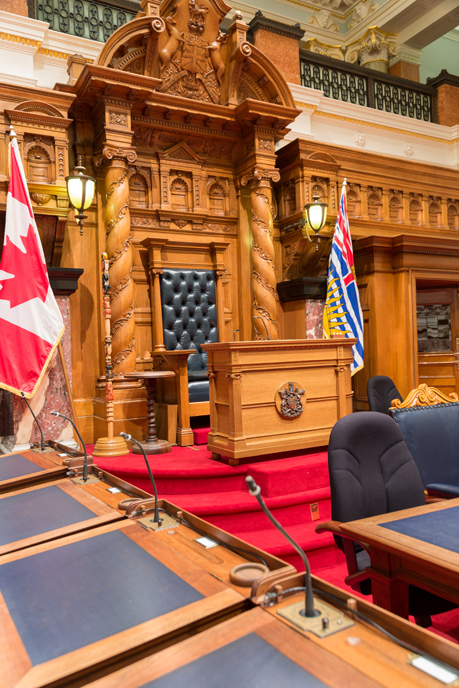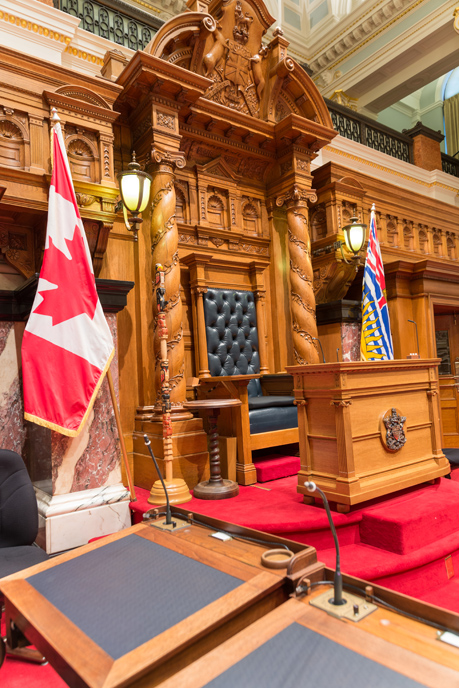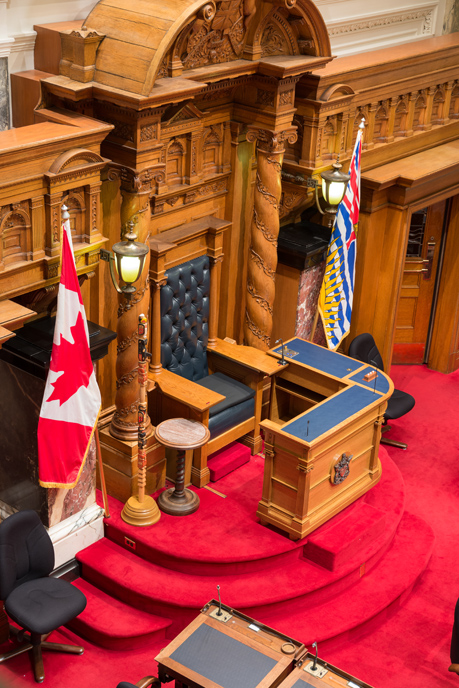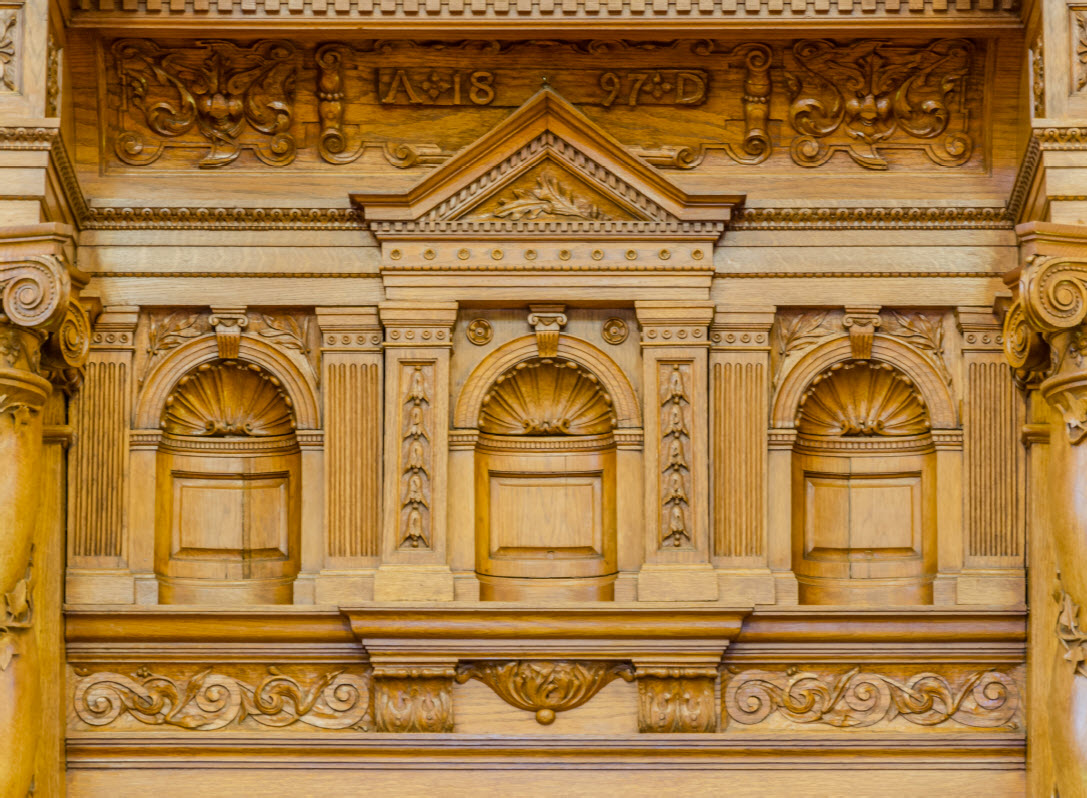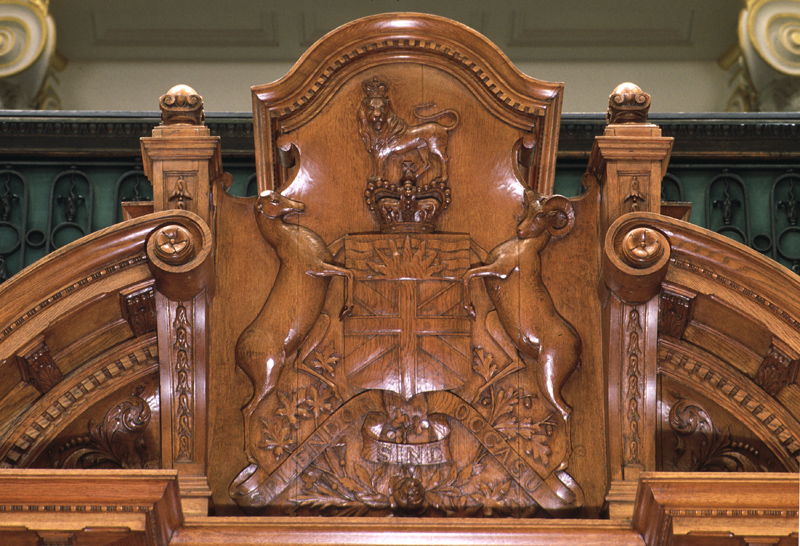At the far end of the Legislative Chamber is the Speaker's Chair. The Speaker is an MLA elected to preside over debates and make sure the Assembly follows established rules of behaviour and procedure. The Speaker is elected by a secret ballot by all Members of the Legislative Assembly at the opening of a new parliament.
In recognition of the Speaker’s authority, this impressive chair is located on a raised platform at the south end of the Chamber. It is flanked by the flags of Canada and British Columbia and is illuminated by two large wrought iron lanterns on each side of a wooden canopy.
The chair itself is carved from Indiana white oak and is upholstered in leather, and it fits seamlessly with its surroundings as the focal point of the Legislative Chamber. The spiraling columns on either side are each surmounted by an ionic-style capital, which is the topmost part of the column. The canopy above the chair is carved of the same wood and features the B.C. Coat of Arms. They were hand-carved in the 1890s by Victoria craftsmen Muirhead and Mann.
On the left of the Speaker's Chair is the Talking Stick; a permanent reminder that reconciliation with Indigenous peoples and communities should be a consideration in all parliamentary debates and discussions.
The Speaker often wears a tricorn hat when entering into the Chamber during the Speaker’s Procession. It is placed on a circular table next to the Speaker’s Chair during proceedings.
Directly in front of the Speaker's Chair is a computer console built into a wooden desk bearing the provincial Coat of Arms. From this panel, the Speaker can view the Orders of the Day, the Votes and Proceedings, and other Assembly documents. Above the console are monitors for viewing Hansard broadcasts, timers, as well as signaling notifiers for MLAs who are unable to stand to get the Speaker's attention.
Traditionally, Speakers were entitled to keep their chair at the end of their service as Speaker. In B.C., this has not happened since the early 20th century.
